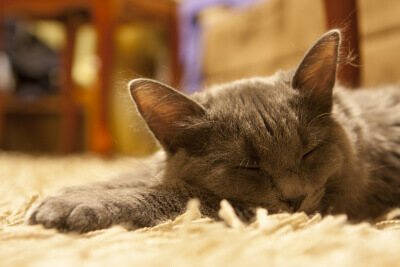Domestic cats come in a wide variety of breeds, along with countless mixed-breed variations. Purebred cats like the Siamese or the American Shorthair can be striking in appearance. However, they are less common in most households due to their cost and limited availability. Most companion cats today are mixed-breed domestic shorthairs or longhairs. These cats are known for their adaptability and diverse traits.
Feline overpopulation remains a serious issue in many communities. In response, local governments often enforce animal control regulations and support affordable spay and neuter clinics. These initiatives aim to reduce the number of stray and abandoned cats. As a result, animal shelters are filled with adoptable cats, many of which are of unknown breed origin but are full of personality. Whether you are looking for a specific breed or simply a loving companion, understanding the most common house cats can help guide your choice.
In this article, we explore the most common house cat breeds and what makes each one so popular among cat owners.
What Is the Most Common House Cat Breed?
The Domestic Shorthair (DSH) holds the title of the most common house cat breed, especially in the United States. These cats are not a specific breed but rather a category encompassing cats of mixed ancestry with short coats. Their diverse gene pool results in a wide variety of appearances and personalities.
According to the ASPCA, there are over 80 million Domestic Shorthair cats in American homes, highlighting their widespread presence. Their adaptability, low maintenance, and affectionate nature contribute to their popularity among cat owners.
Top 5 Most Popular Cat Breeds for Households
While the Domestic Shorthair leads in numbers, several other breeds are also favored by cat enthusiasts:
- American Shorthair: Known for their gentle disposition and robust health, American Shorthairs are often confused with Domestic Shorthairs but are a distinct breed with a documented lineage.
- Siamese: Recognized for their striking blue eyes and vocal nature, Siamese cats are affectionate and social companions.
- Maine Coon: One of the largest domestic cat breeds, Maine Coons are friendly, intelligent, and recognized for their distinctive tufted ears and bushy tails.
- Persian: With their long, luxurious coats and calm demeanor, Persians are a favorite for those seeking a more laid-back feline friend.
- Ragdoll: Named for their tendency to go limp when picked up, Ragdolls are docile, affectionate, and great with families.
These breeds, along with the Domestic Shorthair, make up a significant portion of the feline population in households, each offering unique traits that cater to various owner preferences.
Why the Domestic Shorthair Is So Common
Several factors contribute to the prevalence of Domestic Shorthair cats:
- Genetic Diversity: Their mixed ancestry results in robust health and a wide range of appearances, reducing the likelihood of hereditary health issues common in purebred cats.
- Adaptability: Domestic Shorthairs thrive in various environments, from apartments to large homes, and adapt well to different lifestyles.
- Low Maintenance: Their short coats require minimal grooming, making them ideal for owners seeking a low-maintenance pet.
- Affectionate Nature: They are known for their friendly and playful demeanor, forming strong bonds with their human companions.
- Availability: Being the most common type, they are readily available for adoption in shelters and rescues, promoting responsible pet ownership.
These attributes make the Domestic Shorthair a practical and rewarding choice for both first-time and experienced cat owners.
How to Identify a Common House Cat
Identifying a Domestic Shorthair involves observing specific characteristics:
- Coat: Short, dense fur that comes in various colors and patterns, including tabby, solid, calico, and tuxedo.
- Body Structure: Medium to large build with a muscular physique.
- Head Shape: Rounded head with expressive eyes that can be green, gold, or blue.
- Ears: Medium-sized ears set apart on the head.
It’s important to note that without pedigree papers, a cat is generally classified as a Domestic Shorthair, regardless of its resemblance to specific breeds.
Mixed-Breed vs. Purebred Cats: Which Is More Common?
When it comes to cat ownership, mixed-breed cats are far more common than purebred ones. In fact, the majority of cats found in homes, shelters, and rescues across the country are mixed-breed. These cats, often called domestic shorthairs or domestic longhairs, come in a wide variety of colors, patterns, and personalities. Purebred cats, such as Siamese, Persian, or Maine Coon, are less common and usually come from specialized breeders.
While purebreds are often sought after for their distinct traits and predictable characteristics, mixed-breeds are beloved for their uniqueness and diverse genetic backgrounds. Whether you choose a purebred or a mixed-breed cat, both can make loving companions. But statistically speaking, you’re more likely to come across a mixed-breed.
What Makes a Cat Breed Popular?
Several factors influence the popularity of cat breeds:
- Temperament: Breeds known for affectionate and sociable behavior tend to be more popular.
- Maintenance Needs: Cats requiring less grooming and care appeal to busy owners.
- Health: Breeds with fewer health issues are preferred for their longevity and lower veterinary costs.
- Aesthetic Appeal: Unique appearances, such as distinctive coat patterns or eye colors, attract potential owners.
- Media Exposure: Cats featured in movies, advertisements, or owned by celebrities often see a surge in popularity.
These elements combine to shape public perception and demand for certain cat breeds.
Mixed Breeds Are House Cats For A Reason
If you’re not sure about just getting a house cat, you might want to reconsider. These nonspecific cats offer a lot of traits that make them great companions. The sheer lack of lineage and breeding should indicate that these cats were made for being pets, not for breeding or other uses. The best thing you can do when looking for a new cat is to focus on the cat itself rather than its breed. Unless you have your heart set on something specific, this might be a better option.
Whatever you decide, know that you’ll likely find more mixed house cats than anything else and that you will still have a wide variety to choose from within that category. Mixed breed cats are also less prone to genetic diseases and breeding-related health issues, so they may be a better choice for people who want something low-maintenance, as well. Now that you know more about the cats out there, you will be able to decide what’s best for your family.
FAQs About Common House Cats
Q: Are Domestic Shorthairs good with children and other pets?
A: Yes, their adaptable and friendly nature makes them excellent companions for families with children and other animals.
Q: How long do Domestic Shorthair cats live?
A: With proper care, they can live between 12 to 15 years, and some even longer.
Q: Do Domestic Shorthairs require special grooming?
A: Their short coats are low-maintenance, requiring only occasional brushing to reduce shedding.
Q: Are they prone to any specific health issues?
A: Generally healthy, but like all cats, they should have regular veterinary check-ups to monitor their well-being.
Q: Can Domestic Shorthairs be kept as indoor cats?
A: Absolutely. They adapt well to indoor living and benefit from a safe, enriched environment.


